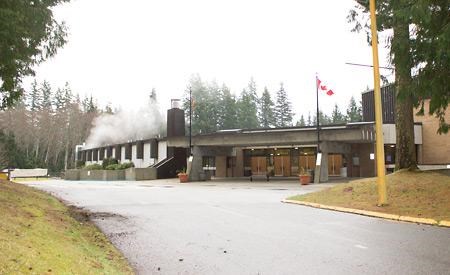A brief review of Powell River Recreation Complex history indicates that at one time this was a very active building. Today, the complex is functioning well below capacity.
In a region-wide recreational study undertaken by Powell River Regional District, it was shown that, while the community is embracing many available opportunities, statistics show that Powell River Recreation Complex is drastically underutilized.
After opening in December 1975, and after several renovations, despite two full-size ice rinks with seating for 1,312, two concessions, a 25-metre pool with seating for up to 300 people, a fully equipped weight room, and a theatre with seating for almost 600, usage numbers are low.
The study identified that when the complex was built, the city focused on providing recreation services to a population that was growing at the time. When the community faced a downturn in the economy and the annual taxation rate reduced as a result, city council looked to participants from the region to contribute more to the operating costs since no regional district tax funds were directed to cover operational costs.
Area A director Patrick Brabazon said the thinking behind the report was prompted by the city directors of the day who wanted a comprehensive look at recreation throughout the area. The study is intended to inform policy decisions moving forward.
“When I got elected 12 years ago, the complex was already an issue,” Brabazon said. “Even then it was underutilized.”
The report states that the practical catchment for the recreation complex is 17,675 residents, of which the city proper makes up 74 per cent. Areas A, B and C comprise 26 per cent of overall users. Interviews conducted with members of the community provided a limited “best guess” as to what data under a broader scope would reveal. City residents who use the recreation complex on a regular basis number 13,165. Users from Area A number 1,008; Area B users number 1,488; and users from Area C number 2,014.
Users in Area D who use the recreation centre on an infrequent basis total 1,053 on average. People in Area E, numbering 463, use the Qualicum recreation facilities and do not use the complex at all.
The city levied a surcharge of 33 per cent to admissions, membership packages and registered programs that applied to users from the regional district electoral areas. However, this approach has the tendency to reduce participation and increase the administrative funds required to collect the surcharge.
After eight years, the city abandoned the practice and now continues to look to the regional district for funding assistance, although no specific proposal for a shared funding model has been tabled to date.
When the user fee was put in place to help make up for the shortfall it was discovered during the public consultation process that Area B was the only region that would likely support the tax, Brabazon explained. “The problem rests in the fact that Areas A, C and D would not be willing to support any kind of tax to supplement the day-to-day operations of the recreation complex,” he said. “I don’t think that has changed much.”
The concept of applying a surcharge to non-contributors has been attempted in several other areas in BC, often with mixed results. “I came out of Victoria and we saw the same thing happen there,” Brabazon said, “There’s simply no support for it. However, I do not want to see this report sit on the shelf and gather dust. [The complex] is both valuable and expensive. I’m not sure where we go from here. I gather that there will be another request that we contribute funding to the complex.”
City of Powell River councillor Russell Brewer said the city is waiting to see a copy of the report. “I think we’re still waiting for the final copy. Director of parks, recreation and culture Bill Reid is tasked with presenting a plan for council to consider. At the moment we haven’t seen the details.”



